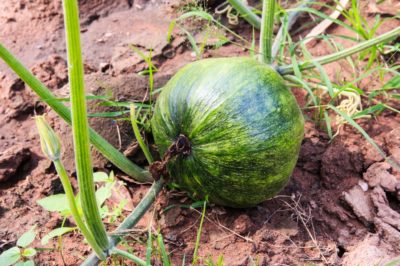Identifying Kabocha Squash
Kabocha squash, also known as Japanese pumpkin, has the appearance of buttercup squash without the bottom “cup”. This small dark green (sometimes light green or orange) squash is shaped much like a pumpkin and averages three pounds each. The orange flesh, rich in beta-carotene, is very similar to a cross between sweet potatoes and pumpkins.
Preplanting Conditions
Kabocha squash plants produce high yields of fruit if given the proper conditions. Prepare to grow this squash by supplying these:
- An area that gets at least six hours of direct sunlight per day
- Air temperatures of 65°F (18°C) or higher
- Soil temperature 2 inches below surface at 60°F (16°C) or higher
- Loose, well-drained soil
- Two or three inches of compost mixed 12 inches deep
- Natural fertilizer such as fish emulsion or aged manure
- Water source
How to Plant
When all the conditions listed above are met, it is time to plant kabocha squash. Planting starts with direct sowing or starting transplants. Most experienced gardeners will say the most successful squash plants come from those started by directly sowing them into the outdoor garden.
Transplants
Kabocha squash is best started in containers that are at least 5 inches deep. Their root systems grow large; therefore, a deeper growing container will help prevent transplant shock. Fill the containers with moistened premium plant starting mixture. Sow seeds 3/4 inch deep in each container. Sometimes seeds fail to germinate, so sowing two seeds per container may be beneficial.
Place the containers in a warm room under fluorescent lights. Keep lights on at least 15 hours per day. On warm days, the seedlings can be introduced to the outside environment for longer and longer periods each day. When the air temperature is consistently above 65°F (18°C), the seedlings can be transferred to the prepared garden location.
Direct Sow
About two weeks after the last frost, it is safe to plant heat-loving kabocha squash. In rows, sow two or three seeds 1 inch deep every 36 inches. If growing in hills, sow six to eight seeds in each 4-8 foot in diameter hill. Thin to the best three plants spaced at least 36 inches apart.
Harvest Time
Most kabocha squash will be ready to harvest in 85-95 days after planting seeds; however, this squash will not be fully ripened for another 45 days. Pick when the outer skin turns grayish green with some orange spots. The somewhat round shape will also become boxier.
